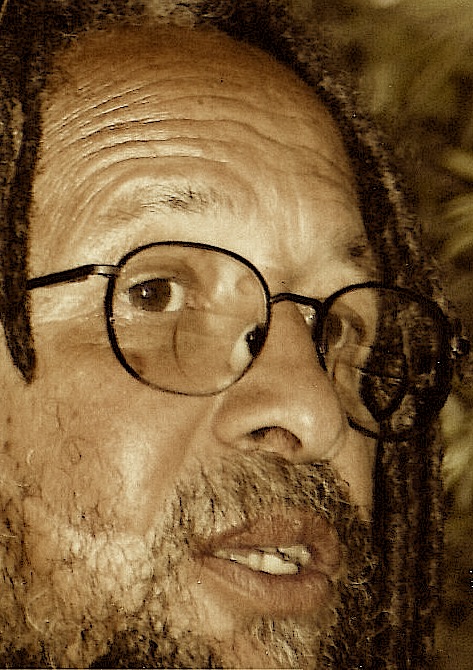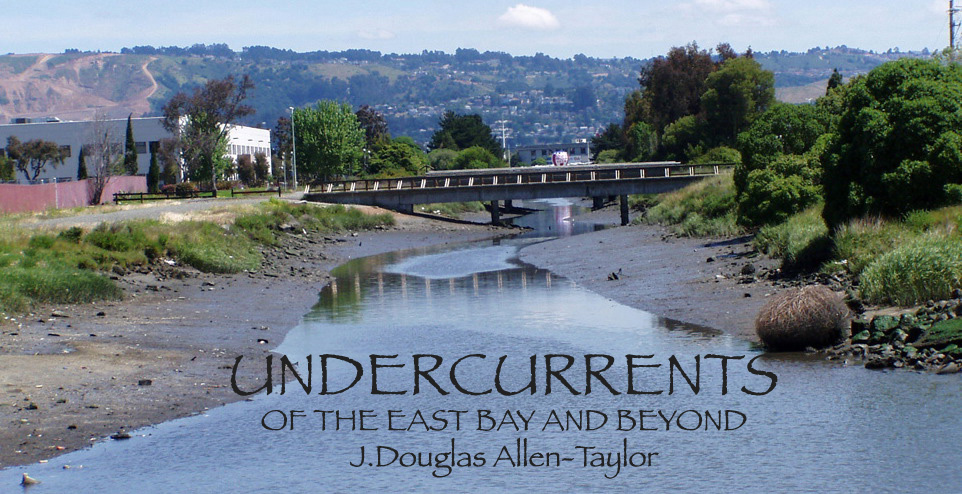|
|
AS A NEW VIDEO SURFACES, CRACKS IN THE GRANT COALITION
January 29, 2009
In the immediate aftermath of the public release of the first cellphone video of the New Years Day Oscar Grant shooting death, we were cautioned by “police experts” that conclusions should not be immediately drawn from the videotaped scene of the horrific event because the video lacked context.
"Strictly on the basis of this video, it is impossible to determine whether the shooting was justified because the officer who fired the shot might have seen some imminent threat to his or others' lives that the camera does not detect at that distance, angle and resolution," the Oakland Tribune quoted University of Wisconsin law professor Michael Scott (a former police officer) as saying in a January 5 article. And in the same article, former law enforcement and police trainer Curtis Cope said that "There are so many things we don't know [from the video alone]. We certainly don't know the reason why they decided to put him prone on the ground. We don't know what reactions were taking place, what orders were being given and whether or not he is then complying or not complying. "... You need to look at every possible angle of it. Those angles all take time." ("New Video Shows BART Officer Shooting Hayward Man In The Back")
These statements appeared—the operative word here is “appeared”—designed to provide some sort of excusable reason for why BART police officer Johannes Mehserle pulled out his pistol and shot the unarmed Mr. Grant in the back while Mr. Grant was lying subdued on the BART platform. Still, there was considerable truth to the assertion that the original Grant shooting videos—showing little more than the shooting itself—failed to answer the question of how and why Mr. Mehserle came to commit such an act. This was especially true because prior to the shooting, neither Mr. Grant nor Mr. Mehserle exhibited any of the type of aggression one would expect to see in such a situation. And so even while condemning Mr. Mehrserle, many observers were left wondering what might have induced or motivated him to pull his gun and then the trigger and propel a bullet into a young man’s back.
But with television station KTVU’s release of a “second” video this week, we have been provided insight into the events immediately preceding Mr. Grant’s death.
This “second” video (there have actually been several released videos from that night, but this appears to be the first one publicly released that reveals what happened before Mr. Grant was on the ground), shows that it was a second BART officer—identified by KTVU as Tony Pirone—who appears to have precipitated the events that led up to the shooting, walking aggressively across the Fruitvale BART platform to confront Mr. Grant and then punch him in the side of his head. Prior to Mr. Pirone’s appearance, Mr. Grant and two Latino companions were standing up against the platform wall and being detained by a female BART police officer, with no apparent problems.
KTVU—which did an excellent job of putting the video in context—then showed the familiar video of the Grant shooting, identifying Prione as the same officer with his knee on Mr. Grant’s head or neck as Mr. Grant lay on the ground. Watching the shooting video in this new context, it now appears that Mr. Pirone was speaking to Mr. Mehrserle immediately prior to Mr. Meherserle pulling out his weapon and shooting Mr. Grant. What Mr. Pirone may have said cannot be heard on the video.
Over the past couple of weeks, some local individuals and organizations—oddly enough—have tried to put the focus of the Grant shooting protests on the City of Oakland, even though Oakland has no responsibility over BART police officers or any of the events leading up to or immediately following Mr. Grant’s New Years Day shooting death. But the release of the new cellphone video puts the focus of attention back where it belongs, on both BART and the office of the Alameda County District Attorney.
In a January 26 article ("Second Officer In BART Shooting Under Investigation"), the Tribune reports that “BART officials [have] responded [to the release of the new video] by announcing a new investigation,” presumably into the actions of Mr. Pirone. But the question is, why did BART not include the actions of all of the BART police on the Fruitvale platform that night a part of its original investigation? That, after all, has been one of the demands made by the various organizations staging the protests in the wake of the Grant shooting, and seems a reasonable and prudent request. Included in that investigation should have been details of the reports of the alleged fight that BART officials said caused them to stop the BART train at the Fruitvale Station that night, as well as how BART police determined which individuals to take off the stopped train and out onto the platform. Were these individuals supposedly still fighting on the train when it was boarded by BART police, were they pointed out as the fight perpetrators by other passengers, or did police just make assumptions on which individuals on the train may have been a part of the fight? All of these questions should have been—and continue to be—important in understanding and judging the events that led to Mr. Grant’s death.
For their part, at least some part officials are now implying surprise that any other officers besides Mr. Mehrserle were culpable in the events leading up to the death of Mr. Grant, with the Tribune reporting in its January 26 article that “at no time during [the] initial investigation [into the Grant shooting] did any witnesses or officers raise a complaint about any officer other than Mehserle using unreasonable force, BART spokesman Linton Johnson said.”
If that was true, then the “initial” investigation was slipshod and shoddy, at the very least.
In the same January 5 article that reported the release of the first shooting video, the Tribune quoted a witness to the shooting who indicated the involvement of other officers, writing that “Mario Pangelina Jr., whose sister had a 4-year-old daughter with Grant, said he was on the same train as Grant that night, but on a different car. He said he saw Grant's interactions with police immediately before the shooting. ‘First, an officer grabbed Oscar by the neck and pushed him against the wall,’ Pangelina said. ‘Oscar didn't fight him, but he didn't go down either. He was like, “What did I do?” Then another officer came up with his Taser and held it right in his face. Oscar said, “Please don't shoot me, please don't Taser me, I have a daughter,” over and over again, real fast, and he sat down.’”
In hindsight, Mr. Pangelina’s description of the officer “grabb[ing] Oscar by the neck and push[ing] him against the wall” may have actually been Mr. Pirone punching Mr. Grant in the side of the head, which Mr. Pangelina could not clearly see because he may not have been in a BART car as close to the scene as some of the cellphone video operators. But it is clear from BART spokesman Johnson’s statement that BART investigators either failed to read witness statements in early newspaper accounts of the Grant shooting—something any competent and serious investigator would do—or else decided to ignore them.
But even as the release of the new cellphone video leads to the possibility that one of the central demands of the loose collection of organizations protesting Mr. Grant’s death—that all of the BART police officers on the Fruitvale platform that night be publicly identified and their actions investigated—serious disagreements are emerging that may fracture the public façade of a cooperative, unified coalition. And, ironically, the issue over which the organizations are fractioning have nothing to do with the demands about the Oscar Grant death or BART itself. Instead, the disagreement is centering over whether to embrace or condemn the two nights of downtown Oakland vandalism that followed two protest demonstrations of the Grant shooting death, as well as what to do about the upcoming trials of the 160 or so individuals arrested those two nights.
The Oakland-based Coalition Against Police Executions (CAPE) organized the two Wednesday night marches and rallies earlier this month—the last one drawing a crowd estimated at 1,500—and have centered their demands in this case primarily around the arrest and conviction of Mr. Mehserle, the identification of the other BART officers on the platform the night of Mr. Grant’s death, and various reforms to the BART police force. CAPE officials, as well as many union and merchant representatives and public officials who supported the two marches and the CAPE demands, have condemned the window smashing and car burnings that followed the two CAPE marches and rallies.
But an even looser coalition of organizations to the left of CAPE—including the Prisoners of Conscience Committee (POCC), a recreation of the Black Panther Party, and the Coalition to Defend Affirmative Action, Integration & Immigrant Rights And Fight for Equality By Any Means Necessary (BAMN)—have added another demand to the list: amnesty for all of the persons arrested in downtown Oakland during the two nights of vandalism following the Oscar Grant marches and rallies. These groups are also calling for people to show up at the arraignments and eventual trials of those individuals, which will soon be taking place. Representatives of this group insist on characterizing the downtown violence as a “rebellion” rather than a “riot,” and argue that without the violence, justice in the Oscar Grant case would not have moved forward at all. (I have some thoughts on that, but will have to reserve those for another time.)
It would seem impossible for CAPE to support the demand for amnesty for the arrested—at least for those who were charged with vandalism—since such a demand would fracture the coalition around CAPE and destroy the unified front it has built for its BART demands. But there is a wider leadership struggle taking place, as well. Many participants in a POCC-organized open forum held last week at West Oakland’s Black Dot Café spent considerable time denouncing CAPE, charging that the organization does not represent “the people” and ridiculing the two Oscar Grant marches as “parades” in which people sang “kumbaya.” Some speakers said that groups were being recruited to come to Oakland in the coming weeks to begin organizing and action efforts, and hope that the city will reprise its 60’s-70’s role as a national radical battleground.
How all of this will affect any future action surrounding the Oscar Grant death and BART, of course, remains to be seen.
|

